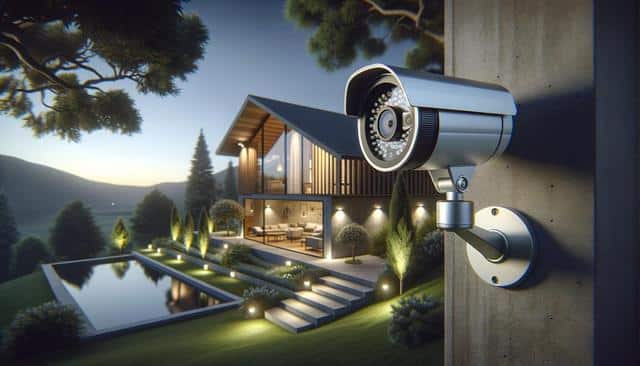
How to Choose and Set Up Your Home Camera and Security System
Understanding Your Home Security Needs
Before picking up any devices, it’s important to assess what your home actually needs in terms of security. Different homes and living situations require different levels of protection. For instance, a studio apartment may benefit from a basic indoor camera setup, while a larger home might require multiple cameras, motion sensors, and entry alerts. Consider the following when planning your system:
- Entry points: doors, windows, garages
- Indoor vs. outdoor monitoring
- Type of property: apartment, house, or shared space
- Whether you have pets, kids, or frequent visitors
Think about your daily routine and when your home is most vulnerable. This will guide you in choosing the right mix of equipment and coverage areas. Start with the essentials and expand based on your comfort level and budget.
Types of Home Cameras and Their Features
Home cameras come in many forms, each with unique features tailored to different use cases. The most common types are indoor, outdoor, and doorbell cameras. Indoor cams are great for keeping an eye on pets or checking in on kids. Outdoor models usually come with weatherproof casing and enhanced night vision. Doorbell cameras allow you to see who’s at your door and often include two-way audio.
Some of the features to look for include:
- High-definition video resolution (1080p or better)
- Infrared or color night vision
- Two-way audio for communication
- Motion detection with smart alerts
- Cloud or local video storage
Many modern systems also offer AI-powered features like facial recognition or package detection. These can be useful for larger households or busy entryways. It’s worth noting that while more features can increase the price, they also offer more peace of mind.
Components of a Full Home Security System
While cameras are the most visible part of a home security setup, a complete system includes more components that work together to provide comprehensive protection. A base station or control hub connects all the devices and often acts as the brain of the system. Motion sensors, contact sensors for doors and windows, and sirens can all be integrated for added layers of defense.
Common components include:
- Base station or control panel
- Indoor and outdoor cameras
- Door/window sensors
- Motion detectors
- Keypads or key fobs for arming/disarming
- Mobile app for remote access
Some systems also integrate with smart home devices like lights, locks, and thermostats. This allows for automation and more flexible control. For example, your system can be set to arm automatically when you lock your door or turn off the lights at night. These integrations can enhance both security and convenience.
Installation and Setup Tips
Setting up a home camera and security system doesn’t have to be complicated. Many systems today are designed for simple DIY installation. That said, planning ahead can save you time and frustration. Start by mapping out where each device will go and ensure each location has access to power and Wi-Fi if needed.
Installation tips to consider:
- Mount cameras at a height that covers wide angles but is out of reach
- Test Wi-Fi signal strength in each planned location
- Use the mobile app to guide placement and settings
- Label sensors and devices for easy troubleshooting
- Keep your system’s firmware and app updated for security
If you’re unsure about placement or connectivity, many manufacturers offer support tools or customer service to assist with setup. Some people also opt for professional installation, especially for more complex systems or larger properties.
Monitoring and Maintenance
Once your system is up and running, regular monitoring and maintenance are key to long-term reliability. Most systems allow for real-time alerts via smartphone, and you can often customize notification settings to reduce false alarms. For example, you might choose to receive alerts only when motion is detected during certain hours or when you’re away from home.
Maintenance tips include:
- Check battery levels in sensors and cameras monthly
- Clean camera lenses for clear video quality
- Test sensors and sirens periodically
- Review saved footage and adjust storage settings
Some home security services offer professional monitoring for a monthly fee. This can be useful if you’re frequently away or want added assurance that help will be dispatched in case of an emergency. Whether you choose self-monitoring or a service, staying engaged with your system ensures it continues to provide value and protection.
Conclusion: Building a Secure and Responsive Home
A home camera and security system is a practical investment in peace of mind. Whether you live alone or with family, having visibility and control over your home’s safety can reduce stress and enhance your daily routine. By understanding your needs, selecting the right equipment, and maintaining your system, you create a safer environment for everyone in your household. Taking the time to plan and set up your home security thoughtfully ensures that it works when you need it most, whether you’re across town or just in the next room.


